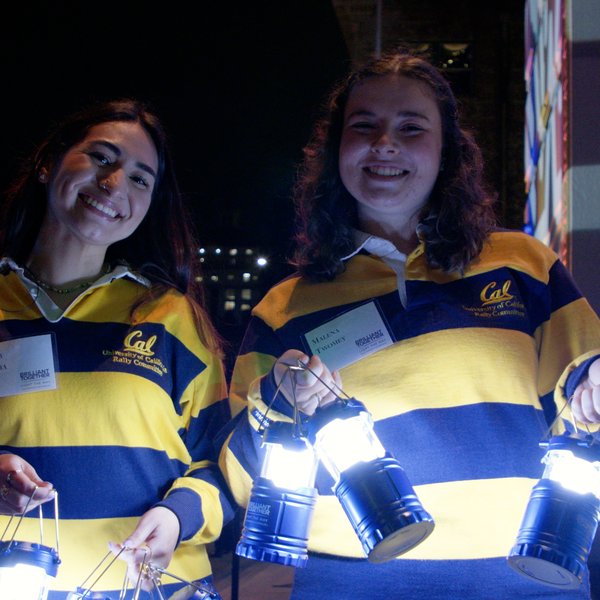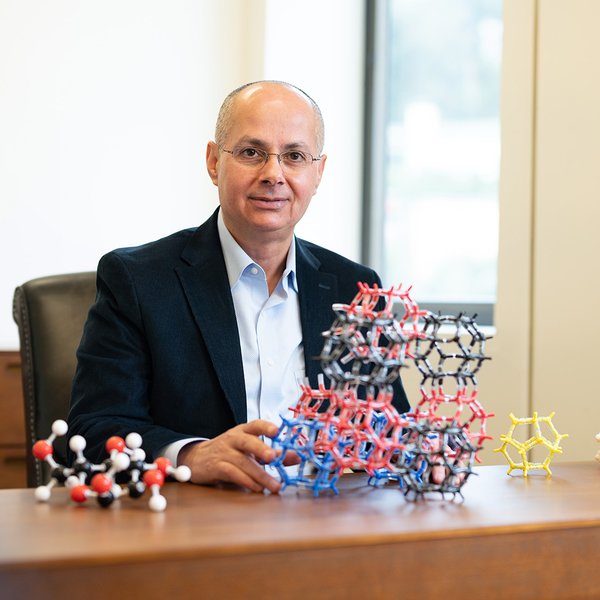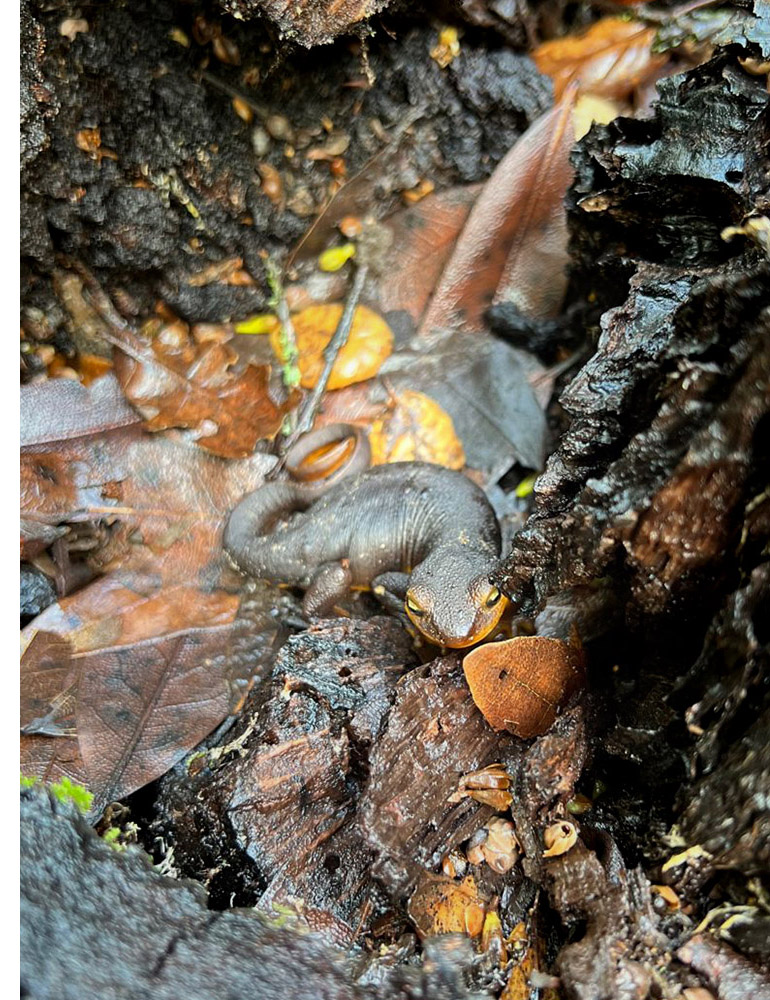
A California newt. Photo by Rebecca Tarvin.
Newts on the Move
Professor Rebecca Tarvin
The first event of the season began on a cool, misty morning in a muddy section of Briones Regional Park — the perfect setting to witness the great California newt migration. Every March, these rare amphibians make an epic journey (at least for them) to nearby ponds for mating season.
Assistant Professor Rebecca Tarvin brought the group to the same cattle pond her lab group uses for fieldwork. No longer forced to awkwardly trudge forth on tiny legs, the newts swam dexterously through the overflowing waters, rolled around in crowded mating balls, and produced semi-translucent globs of eggs — a veritable paradise of slime!
Tarvin’s research focuses on interesting adaptations, such as the California newt’s ability to produce the deadly toxin tetrodotoxin with bacteria living on its skin. Biologists are attempting to determine if and how many of the newt’s ecological neighbors, like the Pacific chorus frog, have developed resistance to the toxin. Not only were the orange-bellied newt sightings plentiful, but the biology and animal enthusiasts in attendance could pose questions to one of the foremost experts on such toxic species.
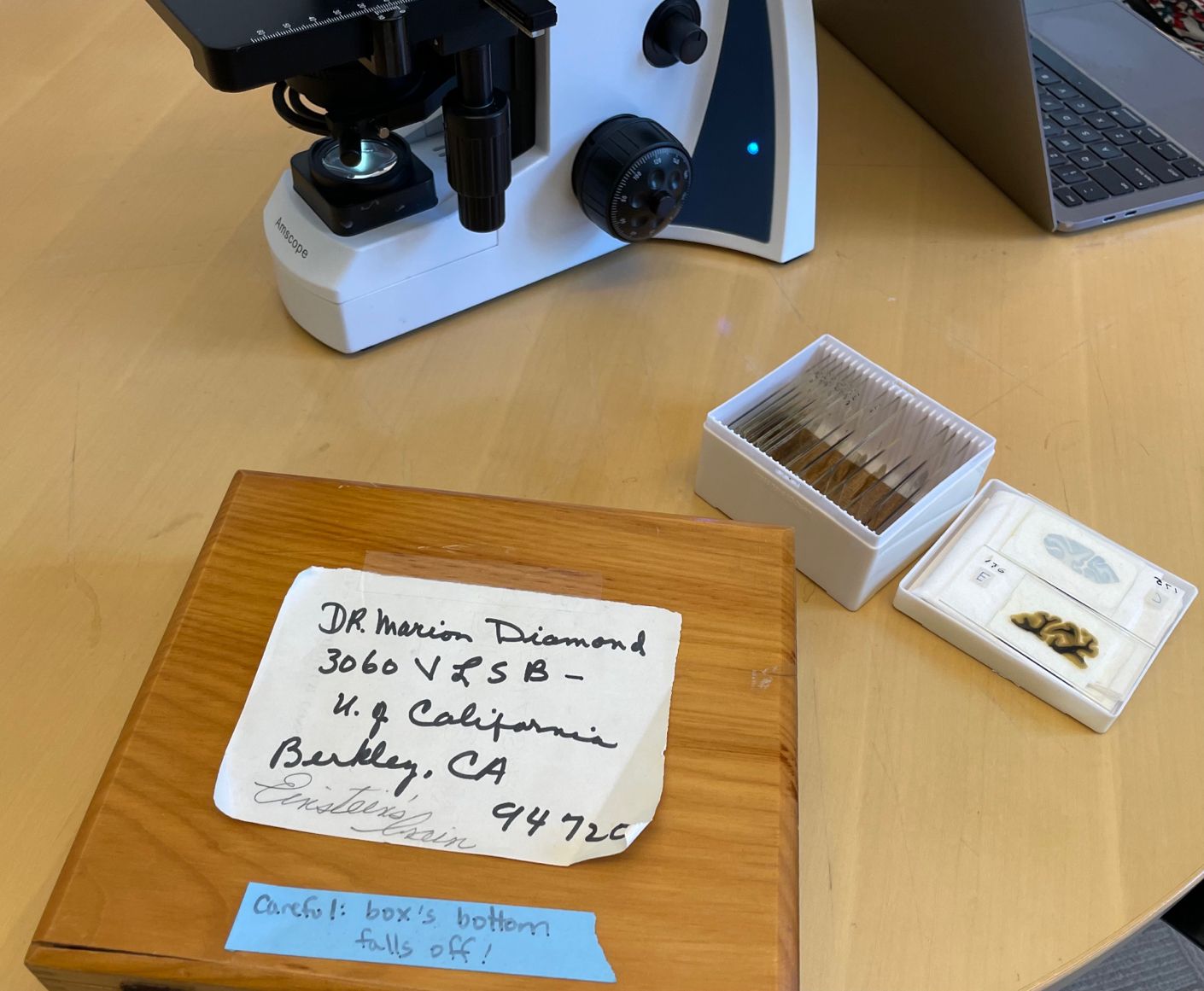
Brain slices from Albert Einstein in microscope slides. Photo by Ryan Guasco.
Biology of Wellness
Professor Daniela Kaufer
An unusual surprise awaited visitors at the start of the second trip to Professor Daniela Kaufer’s laboratory: preserved slices of famous physicist Albert Einstein’s brain.
Former Berkeley professor Marian Diamond, a founder of modern neuroscience, famously studied these same samples. Diamond shaped our understanding of brain plasticity — that brains are malleable, with neural networks that can respond to environmental factors and rewire themselves. Kaufer carries forward this scholarly legacy by studying brain plasticity and paths towards deterioration or resilience in the face of stress, neurological injury, and aging.
The guests heard from students in the lab about post-traumatic stress disorder (or PTSD) and the potential of psychedelics and from Profs. Kaufer and Shafi Goldwasser about an aspirational research center that will combine neuroscience and AI in the study of resilience. Visitors then experienced a short mindfulness meditation activity.
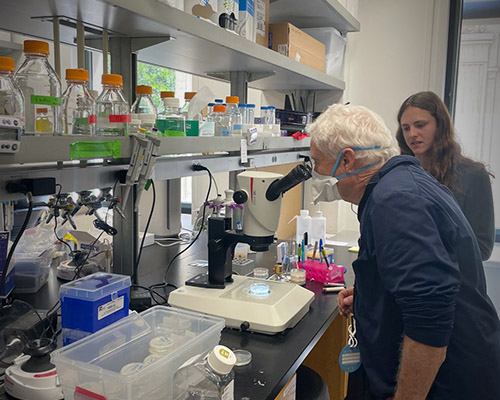
A guest peers into a microscope in Professor Samantha C. Lewis’s lab.
Power of the Cell
Professor Samantha C. Lewis
Assistant Professor Samantha C. Lewis studies mitochondria, or “the powerhouse of the cell,” as she calls it. These parts of our cells create chemical energy for our bodies by processing fats and sugars. The Lewis Lab tests potential treatments for diseases caused by mitochondrial dysfunction, which is common as humans age.
Lewis explained to guests how her lab utilizes CRISPR — the breakthrough gene editing technology that earned Berkeley professor Jennifer Doudna a Nobel Prize — to make tiny worms called nematodes glow. By tracking these nematodes, scientists at the Lewis Lab learn how different tissue and cell types react to stimuli, providing ideas for new disease treatments. Attendees then observed the fluorescent worms under a microscope — they moved much faster than people expected!
Though one can read about faculty members’ discoveries, these direct experiences bring Berkeley research to life. The demonstrations in the Lewis Lab could one day lead to breakthrough medical treatments for diseases that affect tissues such as the brain, muscles, and the heart.
Visit ls.berkeley.edu for more field trip photos and stories.

